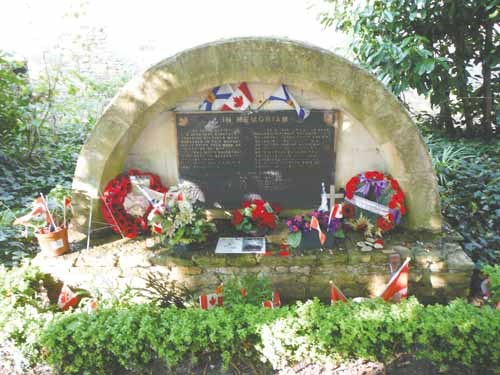A recent trip to Canadian World War I and II battlefields in Europe was an experience for a group of Sacred Heart High School students.
I gained a bigger respect for what the soldiers went through and a better understanding because at first I didn't really realize what they'd gone through," said Kelsey Wolochuk. "It was really eye-opening."
Kennedy Gagné explained that actually being there brought home for her the scale of Canada's involvement in those long ago conflicts.
"I learned what an impact Canada had on the war, I mean, I knew we had an impact, but how huge an impact we actually had," she said. "I also gained so much more respect, not that I didn't have respect, but I gained so much being there, seeing where our soldiers were."
The enormity of the Canadian contribution also made a big impression on Michaela Adam.
"I learned that so many Canadians died and a lot of them weren't even found in World War I or II," she said. "We went to Menin Gate and some other monuments and there were thousands of names and it was really humbling to know that these people risked their lives and died. I learned humility and to be grateful."
It was also very personal for Adam whose great uncle is memorialized on the Menin Gate in Ypres, Belgium. She got to see his name and participate in a wreath-laying ceremony.
"It was really special to see that and my family is really proud, because my grandpa never got to see that and my mom probably won't either," she said.
Tyrell Newcombe was another student with a special connection. His uncle, a member of the Â鶹ÊÓƵ Saskatchewan Regiment, died at Dieppe in World War II and is buried in the cemetery there.
"Visiting my uncle's grave in Dieppe was probably my favourite part, he said. "It was kind of something I never thought I would be able to see; it was quite special."
Newcombe is a bit of a history buff, but said there is no comparison between book learning and visiting the historic sites.
"History 20 is one of my strong suits, something I'm always interested in, so this was really something to experience," he said. "It really gives you a different perspective on war, what actually happened there and how much of a consequence there was to actually be there."
Not all of it was uplifting, though, such as when they visiting the infamous trenches where so many perished.
"It was depressing for me because we were standing where people had died," Woloschuk said.
Garrett Karcha, one of the teachers who accompanied the 40 students said, while visiting the battlefields, particularly Vimy Ridge and Juno Beach, was a "bucket list" item for him, he was concerned the kids wouldn't get as much out of it as they did.
"For the kids what I thought was really impressive was, we went to Amsterdam as well as Paris, but I think that the majority of the students actually enjoyed the battlefields more, which is the point of the trip," he said.
"Just seeing the emotion when we went to some of the cemeteries. We had the students research a particular soldier that was buried in Bény-sur-Mer cemetery at Juno Beach, so they went and put Canadian flags at their [soldier's] grave site and just to see the impact that had on some of the students was pretty powerful."
While the educational part of the tour may have been "the point" as Karcha suggested, there was time set aside just for pleasure.
"I loved Bruges, in Belgium, it was a medieval city and it was really nicely kept and there were beautiful things and delicious food," Adam said. "I had a waffle and it tasted phenomenal."
Gagné, who is of French descent, had been excited about immersing herself in the language and culture of her ancestors. She was not disappointed.
"It was easier than I expected, I understood them better than they understood me, which I thought was really weird, but it was actually pretty easy going the whole time," she said. "It was the coolest thing actually; I felt like a part of Paris and France."

.png;w=120;h=80;mode=crop)


